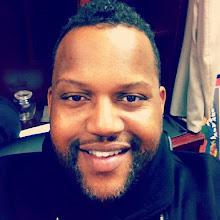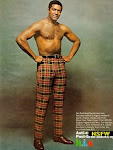
Here's a link to the post on The Black Snob
A meeting place for Black artists and those interested in the arts.


 Museum of the African Diaspora: The Art of Richard Mayhew, Oct. 9-Jan. 10, 2010. Deep, lush, brilliant color that will knock your socks off is just one of the many pleasures offered by Mayhew's paintings in a retrospective that includes landscapes and figurative works from the late 1950s through the 1970s. Mayhew, an activist and artist of African and Native American descent swept up in the fervor of the 1960s, was, along with Romare Bearden and Norman Lewis, a founding member of Spiral, a legendary coterie of black artists who addressed issues of racial equality through their art. http://www.moadsf.org/
Museum of the African Diaspora: The Art of Richard Mayhew, Oct. 9-Jan. 10, 2010. Deep, lush, brilliant color that will knock your socks off is just one of the many pleasures offered by Mayhew's paintings in a retrospective that includes landscapes and figurative works from the late 1950s through the 1970s. Mayhew, an activist and artist of African and Native American descent swept up in the fervor of the 1960s, was, along with Romare Bearden and Norman Lewis, a founding member of Spiral, a legendary coterie of black artists who addressed issues of racial equality through their art. http://www.moadsf.org/
 Sister Gertrude Morgan (1900-1980) was a preacher, missionary, artist, musician, and poet who worked in New Orleans in the 1960s and '70s, notable primarily for her folk art.
Sister Gertrude Morgan (1900-1980) was a preacher, missionary, artist, musician, and poet who worked in New Orleans in the 1960s and '70s, notable primarily for her folk art.Music was one of the tools of her ministry, and in the early 1970s, Let's Make A Record was recorded in order to capture Morgan singing and playing her tambourine. She painted in order to create visual aids for her preaching, and her paintings use a colorful religious iconography. Some of her favorite subjects are the Book of Revelation and her and Jesus flying in an airplane, this last accompanied by the poem "Jesus is my air Plane." She painted on whatever was at hand, including styrofoam trays, window shades and even toilet paper rolls.
She painted in order to create visual aids for her preaching, and her paintings use a colorful religious iconography. Some of her favorite subjects are the Book of Revelation and her and Jesus flying in an airplane, this last accompanied by the poem "Jesus is my air Plane." She painted on whatever was at hand, including styrofoam trays, window shades and even toilet paper rolls.
Her art brought her fame and notoriety, and in 1974 she announced that the Lord had ordered her to cease painting in order to concentrate on her preaching and poetry. She died in 1980.
In 2005, the New Orleans Museum of Art presented the first comprehensive collection of her art. Also in 2005, the Ropeadope label released King Britt presents Sister Gertrude Morgan, which took the a cappella/tambourine recordings of Let's Make A Record and added contemporary beat programming and instrumentation. The album received rave reviews and created a new, young audience for Sister Gertrude Morgan. The album artwork featured her paintings.
 In the 1940s, a photographer named Gordon Parks broke into a scene that had previously been dominated by white men. He was the first black photographer to work for magazines like Life and Vogue, and the first to work for the Farm Security Administration and the Office of War Information. Born into poverty and the youngest of 15, he had a sensibility about poor living conditions. But as a renowned photographer, he also had access to some of the most famed athletes and celebrities, like Muhammad Ali and Ingrid Bergman.
In the 1940s, a photographer named Gordon Parks broke into a scene that had previously been dominated by white men. He was the first black photographer to work for magazines like Life and Vogue, and the first to work for the Farm Security Administration and the Office of War Information. Born into poverty and the youngest of 15, he had a sensibility about poor living conditions. But as a renowned photographer, he also had access to some of the most famed athletes and celebrities, like Muhammad Ali and Ingrid Bergman. 



 Last Offence
Last Offence



See a Tour of Mrs. Cafritz's home and collection here.
Read the Rest of the Story Here.




